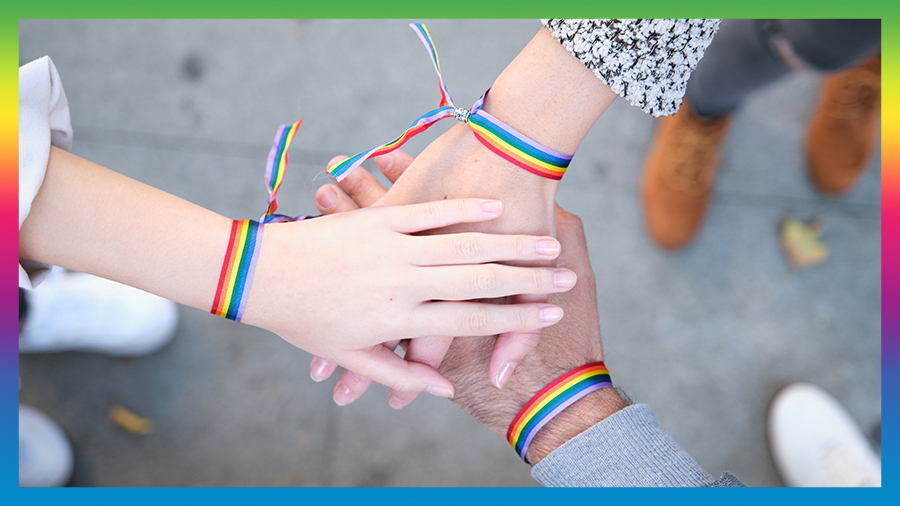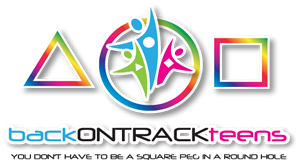
27 Sep Nathan’s story: I was 12 years old and had just kissed my first boy
Hey – thanks for having us on your screen. Welcome to the Back on Track Teens blog for young people and those young at heart.
You’ve loaded a blog article that’s part of a mini-series about gender and sexual identity*. The mini-series shares 11 wonderful and inspiring stories from young people who identify as LGBTQ+. Feel free to read on but you may want to pause and have a quick scan of the opening article to give a bit of context around the collection of stories and resources available. Please click here to read the first article.
“Saying bi is easier than explaining pansexual” – Nathan
This next article in our gender and sexual identity mini-series introduces Nathan, a young man who identifies as pansexual. Nathan’s honest account of his own journey is a great example of fluid sexuality and serves as an excellent reminder that it’s OK to make choices that reflect your shifting understanding of yourself.
This mini-series shares the stories of young people who identify as LGBTQ+ in the hope that it will help other young people who may see their experience reflected in these stories. These posts are also for parents, care-givers, family, and friends who have questions and would also like to find support and guidance.
Real people’s stories around understanding their own gender and sexual identity
To set a framework for the conversation that follows, the definition of pansexuality is the sexual, romantic or emotional attraction towards people regardless of their sex or gender identity. Sometimes referred to as ‘gender blind’, a pansexual person declares that gender and sex are not determining factors in their romantic or sexual attraction to others.
“I was young when I came out, I was 12 years old and had just kissed my first boy. I came out as bi but then suddenly lost interest in girls because I wanted to experiment with boys a lot more. I side-lined women and ended up thinking I was gay. And maybe I was gay for that period of time.
Over the past couple of years I have been feeling more attraction to girls and, as that’s developed, I’ve ended up considering myself pansexual because I like both or anything – I don’t know if I like it until I see it! Even now people make me feel like ‘you are this’, ‘you are that’ [but] it’s like you’ve not had ice cream for the first time and you don’t know you like it until you’ve tried it.”
Thoughts, feelings and preferences may change over time but that doesn’t make any of them any less valid. There is nothing wrong experiencing sexuality in a fluid way that changes and fluctuates over time. Challenges arise because society has been conditioned to prioritise binary choices and the notions of ‘how it should be’. In actual fact, there is no one superior way to be when it comes to sexuality and how people identify.
What was it like to ‘come out’?
“At first it was like I needed to say to people that I was interested in that person, so people knew. Probably more of a stigma with friends saying ‘have you told so and so’ made me anxious about coming out. It made me feel like why do I need to tell that person?
I realised later down the line that I don’t really need to tell people until they need to know. My dad had known I was speaking to guys without me needing to say and we just ended up talking about my boyfriend one day. Now he might be confused if I brought home a girl because he wouldn’t understand how that works. Older generations [sometimes] struggle to understand. People understand one decision then struggle that it’s fluid and changes over time. Saying bi is easier than explaining pansexual.”
Many terms relating to gender and sexual identity (such as pansexual) might sound unfamiliar to some, but in truth most are not necessarily new. It’s only when they enter mainstream culture and are spoken about more freely do they become well known, which Nathan agrees is a good thing.
Discussing stereotypes and homophobia
“The worst time was when I was younger before I even came out. Bullying was emotionally bad. I would say I didn’t care [to the bullies] but as soon as I said I was gay they were confused. I felt freer when I started being more open about it and it drives my personality – people can’t get to me for it. It’s like my shield and it’s great not to care.
When you own it, it takes away other people’s power. They point out your insecurities because of their own insecurities. If you’re not insecure, they can’t affect you. Bullies point out the obvious, the stereotypical. I say, you do you and I’ll get on with me.”
Nathan has never felt the need to fit into stereotypes but says he has been stereotyped by others. In his experience, Nathan explains that people assume things because they don’t have any clarification or don’t understand. The same can be said for any person. Until you get to know someone, you can’t fully understand them or their personality. Stereotypes are often formed from a small snapshot opinion of someone, or people who are similar in one or more characteristic. And opinions are always subjective.
“I don’t get mad at people, it’s not their fault because they don’t understand. Everyone should stand up for everyone. If people are repeatedly [stereotyping] then it’s an issue. People should learn from that the first time. Correcting people helps people to learn.”
What resources are out there to help people learn more?
Nathan explains that there are many resources and social groups out there to find support, ask questions and feel part of a community. He believes that not assuming gender and sexuality is a big step in getting over binary assumptions.
“My main support is from my friends, who I consider family. I have a lot of mates, but I’d say about a third [identify as LGBTQ+]”
What advice would Nathan offer to parents?
Nathan would encourage parents to speak to their children. Growing up, especially during teenage years, everyone is trying to understand how they are feeling. Being able to openly talk about thoughts and feelings around sexuality and gender will ensure that young people feel able to share and don’t start to feel alienated.
“I think it’s not about going into it really that much, but it’s about understanding. Listen to them, even if they don’t want to talk about it. As long as the child knows that that parent is ready for them to say whatever.”
How can sex education be improved in schools?
Creating a safe space to communicate is just as important when it comes to sex education in schools.
“I had a 45-minute lesson on how things worked. All I remember seeing was two pictures and trying to understand. I don’t think [teachers] understand how to teach it. It’s such a taboo subject and teachers get awkward, therefore kids get awkward. If we had conversations regularly it wouldn’t be awkward, and kids would have safer sex.”
Nathan sees sex education in schools as explaining puberty and the scientific part of what the body is going through. He thinks they need to teach about where sex fits into the different stages of life to understand how it works, what is and isn’t safe, and to understand the emotional implications – even if it’s through a one-to-one conversation.
Nathan also feels that sex education should include open, honest discourse around relationships and consent. He recognises that there’s the potential for real harm to occur when young people don’t have the opportunity to learn about what behaviours are and are not acceptable in sexual relationships or encounters. For example, if a partner asks you to do something that you are not comfortable with, Nathan fears that many people will go through with it anyway because they feel they must or they may not realise that they are being coerced.
What advice would Nathan give to his younger self if he got the chance?
“Not a lot to be fair because I kind of like the path that I’ve been on that leads to understand where I am now. I think I’d say I wouldn’t put a label on it … as long as I own what I am that’s when I feel comfortable to be open about things and because I understand it, I can then explain it to people.” Nathan
Listen to Nathan's story
Choose the life you want to lead
Nathan was very open and frank in sharing his story and he credits his ability to do so because he has a clear understanding of his gender and sexual identity. Conversations like the ones in the Spark to Your Success podcast series all contribute towards a greater capacity for understanding and acceptance.
Please share your thoughts with us and help to uplift LGBTQ+ voices and stories.
Learning from trusted resources and people who are comfortable sharing their own story helps to build resilience, confidence and comfort.
“I believe that no one should ever have to choose between a career we love and living our lives with authenticity and integrity”
Out & Equal Executive Director Selisse Berry
Thanks for reading…
Creating the gender and sexual identity mini-series has been an incredible experience for the Back on Track Teens team.
- I encourage you to go ahead and download our free eBook, which brings the interviews together with a huge collection of information, resources and inspiration.
- Subscribe to the Spark to Your Success podcast here.
- Access insightful stories, helpful exercises and more resources on our blog.
- Refer to the Back on Track Teens LGBTQ+ glossary here.
- Order ‘The Spark to Your Success – Helping Teens Build Resilience’ here.
- Order ‘The Spark to Your Success – Mindset Magic for Teens’ here.
Are you a parent or caregiver of a young person who may be experiencing challenges around gender and/or sexual identity? Book a session with TeeJay Dowe
Work at a school or organisation and want to know more? Book an awareness training session
*The blog articles capture real stories and the topic of conversation is frank. Its purpose is to elevate the voices of people within the LGBTQ+ community, answer questions, provide resources, and offer support.



No Comments